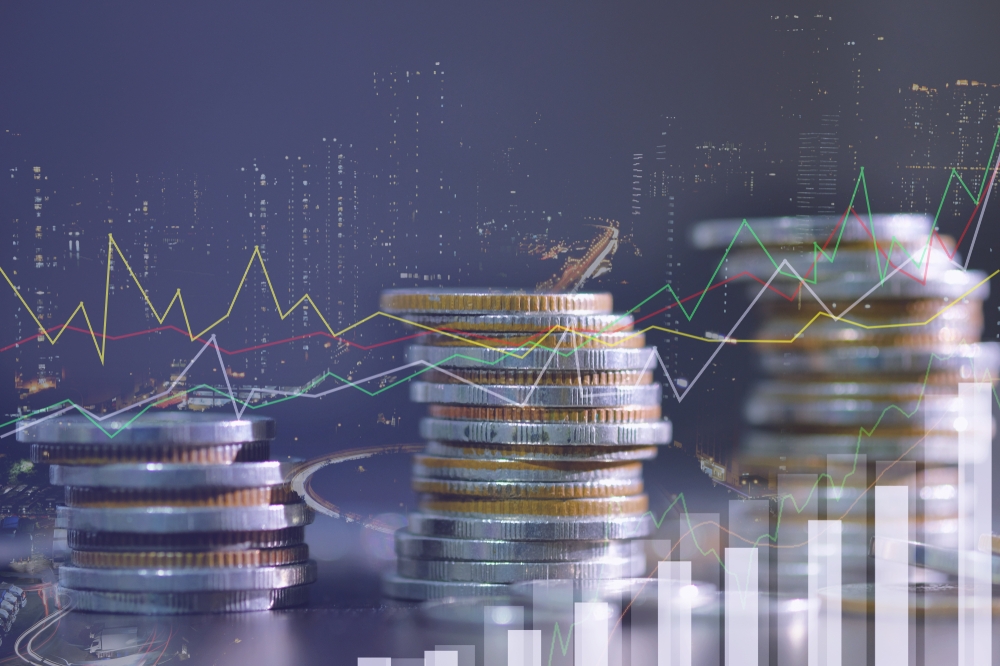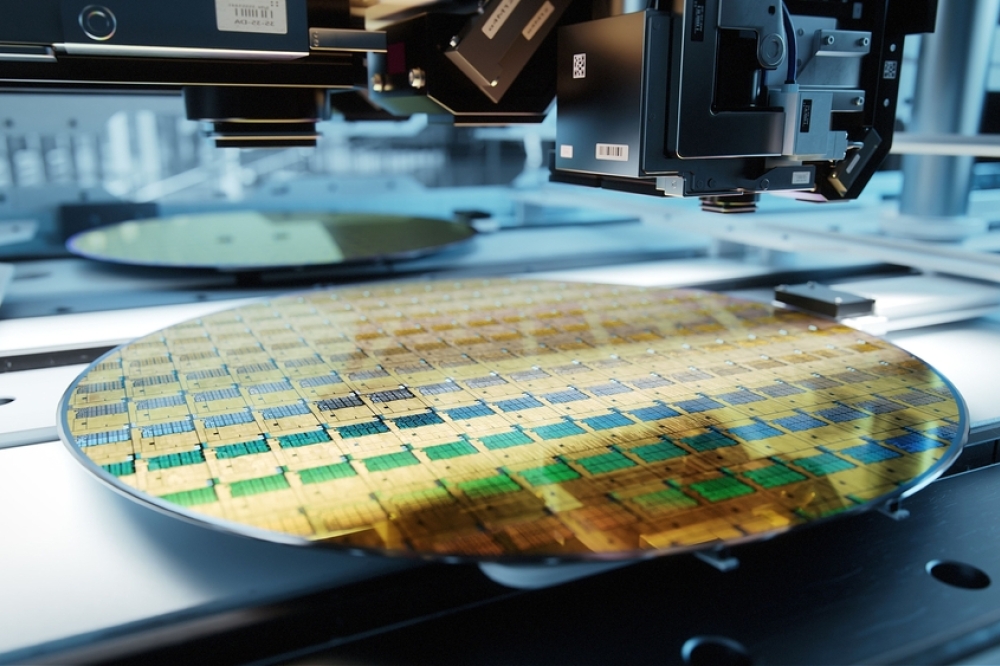Edwards sustainability programme reduces GHGs while cutting OpEx

Silicon Semiconductor Technical Editor Mark Andrews recently spoke with Paul Neller, Edwards Vacuum marketing vice president, regarding the vacuum and abatement leader’s push for a sub-fab operations sustainability model. According to Neller, sustainability is a ‘win-win’ for semiconductor manufacturers who can reduce greenhouse gas (GHG) emissions while simultaneously slashing some operating expenditures (OpEx).
The post-pandemic summer of 2022 has shown the world that COVID-19 is but one of many challenges facing the planet’s population. Climate change has roared across headlines this summer in the form of widespread wildfires in Europe and North America; accelerating ice sheet melts in Antarctica and Greenland, and unseasonable weather just about everywhere that included once-a-millennia flooding in many parts of the world.
Even as climate change deniers now seem pushed to the fringe, the question remains: are we doing enough to mitigate the worst effects of climate change? Unusual and deadly weather appears but one symptom of a problem that grows each year. What can energy- and resource-intensive IC manufacturing do to help reduce its carbon footprint while at the same time enabling the continuing growth of semiconductor manufacture? According to Edwards Vacuum Paul Neller, helping save the planet while making astute business decisions is not mutually exclusive—it is in fact a ‘win-win’ proposition, he says.
Silicon Semiconductor Technical Editor Mark Andrews recently spoke with Neller about climate change, sustainability, and how IC manufacturers can do their part while continuing to serve customers even as they maintain a healthy bottom line.
Mark Andrews – Climatologists believe a major way to reduce the impact of human enterprise on the global climate is moving towards a sustainability model, which I describe as proactive resource management and conservation strategies to reduce GHGs on the way to a carbon neutral future. How does Edwards Vacuum view sustainability?
Paul Neller – There is almost universal consensus within the scientific community that anthropogenic greenhouse gas emissions, principally carbon dioxide from burning fossil fuels, are causing climate change. Edwards fully recognizes that link and is firmly committed to doing everything it can to reduce the emission footprint of its manufacturing operations and its products. That is part of a broader commitment to sustainability, which seeks to reduce all negative impacts of our enterprise on the environment. Of course, greenhouse gas emissions are a primary component of sustainability, but the concept also extends to such topics as conserving fresh water and other limited resources and avoiding pollution from chemicals or materials like single-use plastics.
Mark Andrews – Why is it important for semiconductor manufacturers and their extensive supply chain to work towards achieving sustainability? After all, isn’t microelectronics a relatively ‘clean’ industry?
Paul Neller – Yes, the semiconductor industry is relatively ‘clean’ compared to some other industries, at least in terms of its direct emissions of greenhouse gases. But direct emissions do not tell the whole story. The Greenhouse Gas Protocol defines three scopes or categories of emissions: scope 1 is direct emissions; Scope 2 is indirect emissions from the generation of purchased power; and Scope 3 is emissions of upstream suppliers and downstream users of a company’s products and services. In Scope 2, semiconductor manufacturing is energy intensive. I have seen estimates of power consumption as high as 1.5 kilowatts per square centimeter of a finished device. Multiply that by the number of square centimeters and you get an exceptionally large number. And globally, most of that power is still generated by burning fossil fuels. Now consider Scope 3, the power consumed by semiconductor devices over a lifetime of use. Data centers are notoriously power hungry. One study estimated that data centers in Ireland could account for 25%-30% of national power demand by 2030. Worldwide, computing power consumption is doubling every 3 years, while energy production grows only 2% per year. At those rates computers will consume more power than we produce sometime between 2040 and 2050. This is a gross oversimplification, but it makes the point: current trends are unsustainable.
In the broadest terms, sustainability requires us to move from a linear economic model to a circular one. In a traditional linear model – sometimes characterized as “take, make, use, and waste” – resources are taken from the environment and used to make a product; the product is used for its normal lifetime and then becomes waste, typically destined for landfill or something similar. This is clearly not a sustainable model as all resources are ultimately limited and much energy is wasted every time we create a new product from scratch. A circular model transforms the linear approach by considering any and all waste to be an input back into the system.
Today, most companies in the semiconductor industry have taken some steps toward circularity. But to truly reap the benefits of circular economy, we need to look at the process as a more complex set of interrelating systems. Transforming to the more complex model is not easy. We need to consider the entire supply chain and look at how value can be generated at each step. This requires an intimate relationship between the product manufacturer and the customer with multiple, closed-loop value chains. The information exchanged in such a relationship is invaluable for developing better, more sustainable products in the future. But most importantly, the transformation must generate tangible business benefits, or it will not occur.
Mark Andrews – Is sustainability mainly focused on the 4 Rs: Remove — Reduce — Reuse — Recycle, or are there other factors that come into play?
Paul Neller – “Remove, reduce, reuse, recycle” has become somewhat of a mantra within the sustainability community, and it captures well the main emphases. Current focus in semiconductor manufacturing and among semiconductor manufacturing equipment suppliers like Edwards is on “reduce” – particularly on reducing energy consumption. There is general agreement that the path to avoiding the most catastrophic effects of global warming lies in electrification and decarbonization – that is, converting our energy consumption to electrical power wherever possible and using non-carbon-emitting sources to generate the electricity--sources like wind, solar and nuclear. But these conversions take time. The best options for immediate progress are to be found in reducing energy consumption, and many of these changes can and will be incremental, requiring neither radically new technologies nor major investments in infrastructure.
A big part of the challenge is simply achieving visibility and awareness. Toward this end SEMI has updated the S23 guidelines for energy, utilities, and materials efficiency. The guidelines describe procedures for evaluating energy consumption by semiconductor manufacturing equipment with the goal of facilitating comparisons that will bring market forces to bear on both users and suppliers. Notably, the guidelines include energy equivalents for utilities and materials consumed in the manufacturing process.
At a higher level, the Greenhouse Gas Protocol establishes a methodology for determining and reporting the greenhouse gas emissions of private and public sector operations. It takes a more comprehensive approach than S23, looking beyond the energy consumption of equipment “in use” to include all sources of greenhouse gas emissions from a company’s internal operations and throughout the supply chain over the lifetime of its products.
Mark Andrews – Why is achieving sustainability important for any industry that seeks to play an active role in combating climate change? Can this be achieved while sustaining or even growing profitability?
Paul Neller – Yes, absolutely! And reducing energy consumption is an excellent example. Energy is expensive. Reducing energy consumption reduces operating costs and goes directly to the bottom line to increase profitability.
Mark Andrews – What is Edwards Vacuum doing to achieve sustainability within its own operations?
Paul Neller – We have developed new environmentally focused vision and mission statements to make sure that sustainability is at the heart of what we do and guides our forward strategy. Within that, we acknowledge our role, as part of the semi manufacturing supply chain, in helping our customers reduce their environmental impact. Through our parent company Atlas Copco, we participate in the Science-Based Targets initiative, which encourages companies to establish emission targets that are consistent with the requirements defined by climate scientists to meet the goals of the Paris agreement – limiting global warming to 1.5°C. Science-based targets cover areas directly ‘owned’ by the company as well as indirect areas over which we have some level of control or influence. Indirect areas include those upstream – so for example our energy sourcing, the transportation of materials into our operations, business travel, and employee commuting; and downstream – what we can do to help our customers’ carbon footprint, such as minimizing our packaging and reducing the energy consumption of our products.
We recently analyzed the greenhouse gas emissions associated with one of our vacuum pumps over its entire life cycle – raw materials procurement, manufacturing, packaging, shipment, use, decommissioning, and disposal. More than 97% of greenhouse gas emissions came from generating the power consumed by the pump in use. Clearly, in this case, the potential benefits of improving energy efficiency dwarf any savings available in other categories.
Mark Andrews – Is Edwards also working with its customers in coordinated programs so that when its products are installed on-site they become part of an overall sustainability program? Is Edwards offering suggestions for customers to make their own operations more sustainable?
Paul Neller – Yes. Of course, every customer is different. As our mission statement says, “we acknowledge our role, as part of the semiconductor manufacturing supply chain, in helping our customers reduce their environmental impact.” That may be as simple as integrating a reduced energy mode – idle/rest/sleep – with their automated control systems. Or it may be collaboration in new product development. We are currently looking at several innovative technologies tied to wafer material roadmaps, including recycling hydrogen, xenon, krypton, and helium; capturing carbon; and reusing ammonia and hydrogen.
I should point out in this context that Edwards abatement systems have significant impact on our users’ greenhouse gas emissions, preventing 17.7 million (2020) tons of CO2 emissions at our customers’ facilities each year, which is equivalent to the combined annual emissions of Madrid and Milan.
Mark Andrews – Besides the clear benefit of supporting national goals to reduce or reverse climate change, what incentives do Edwards and its customers have in supporting sustainability efforts?
Paul Neller – The most obvious is the financial incentive – energy is expensive and saving energy saves money. But just as important is mitigating environmental costs, which, though they are currently unaccounted for are no less real, and we will have to pay for them eventually. I say, ‘…currently unaccounted for…’ because this may change. Many economists and climate activists are advocating for some way to monetize these shared communal costs, translating them into financial costs that can be assessed against those who generate and benefit from greenhouse gas emissions – a carbon tax. This would bring market forces into play. Although no such approach has yet achieved wide acceptance, it may well be in our future.
Mark Andrews – What does Edwards Vacuum view as this initiative’s next steps towards achieving success? Is there a road map you can discuss?
Paul Neller – The value of a roadmap lies primarily in its ability to coordinate efforts among independent organizations to achieve common goals. Our industry may be the prime example of that value. We have been guided from our earliest days by a technology roadmap that we have followed with tremendous success. The SEMI S23 guidelines call for the development of an industry roadmap to improve energy efficiency.
We believe strongly in the value of the science-based targets initiative. It is something we can all do now, but to date few semiconductor manufacturers have signed up. Some seem reluctant to commit because all the implications are not yet clear, but an industry that can shrink a transistor from one micrometer to seven nanometers in a couple of decades can surely accept this challenge.
Perhaps the most critical effort we can make is to influence policy. Recent developments in global politics have made absolutely clear the critical role semiconductors play in almost every aspect of our lives. Governments around the world are recognizing the strategic importance of our industry and committing massive investments to ensure a viable semiconductor manufacturing capability with a reliable supply chain and stable infrastructure.
Although the most immediate opportunities lie in improving the energy efficiency of our manufacturing processes and equipment, the ultimate solution at the global scale remains electrification of our energy consumption and decarbonization of our energy generation. These require national and international governmental involvement. We as an industry have substantial resources and the attention of governments around the world. That is political clout and now is the time to use it. We can only reduce our carbon footprint, tackle climate change, and achieve environmental sustainability through active collaboration. Let’s lean in and work together for our own good and that of generations to come.
































